In art, meth lab imagery tends to engage the DIY spirit of the outlaws. In an art context, before they are outlaws, they are makers. Claiming them is radical, but possibly no more radical than artists’ interest (now fading) in Project Runway. From high fashion to low crimes, enterprises that require the skill of the hand attract artists, even those whose practice calls for them to delegate fabrication to others.
As installations, meth labs fascinate, which can’t be said of PR. The problem with the current season is not the move to LA, although it didn’t help. It’s not the sporadic appearance of the New York judges, who are disinclined to make the trip. That didn’t help either. And it’s not the goofy challenges. There have always been goofy challenges.
It’s the poor quality of the contestants. Where did PR get these people? Of the final three, only Carol Hannah Whitfield has possibilities, and they dim compared to finalists in previous years. As for Irina Shabayeva, she projects shallow luxury, while Althea Harper projects not much of anything.
Meth labs, however, always have possibilities, being made and wrecked at the same time.
Meth kills, but so does moralism. Think of where we might be if the U.S. government had paid Afghan farmers for their poppy crops instead of burning their fields. Once in control of the product, we could have used it for medical pain relief in the Third World, where surgeries without anesthetics are too common. For a fraction of the cost of killing them, we could have helped the poorest of the poor raise their standard of living.
And if, in the U.S., drug abuse were a medical and not a criminal problem, those who construct the labs would be reduced to making something else. Art, for instance.
Jonah Freeman, Justin Lowe and Alexandre Singh
Hello Meth Lab in the Sun #1, 2008
custom pigment print
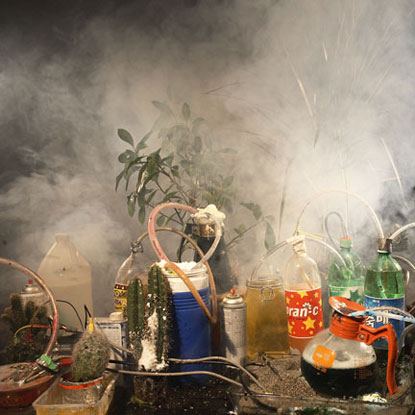 Eli Hansen, I’m not paranoid because I’m high, 2009
Eli Hansen, I’m not paranoid because I’m high, 2009
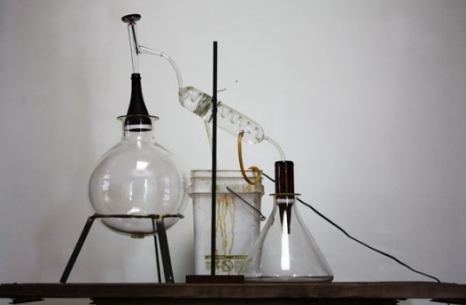 Davis Langlois Meth Lab, 2003, oil/canvas
Davis Langlois Meth Lab, 2003, oil/canvas
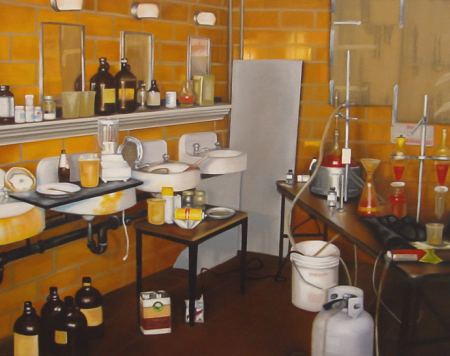



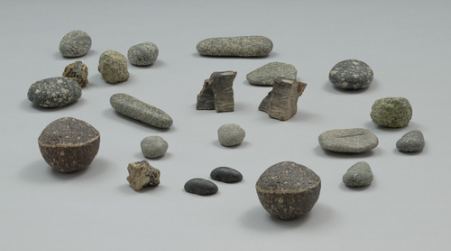 Fourteen years later,
Fourteen years later, 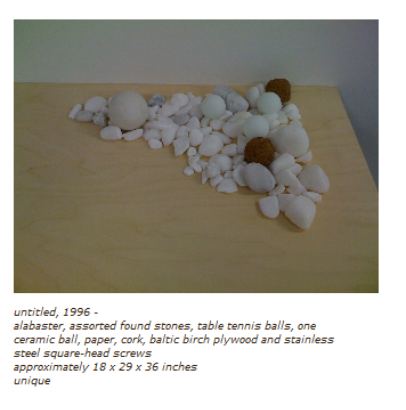
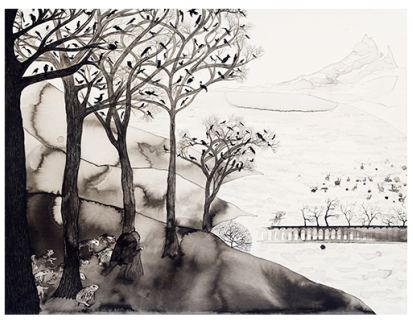
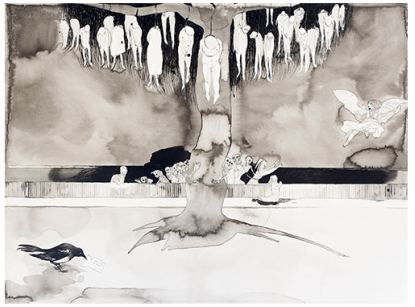
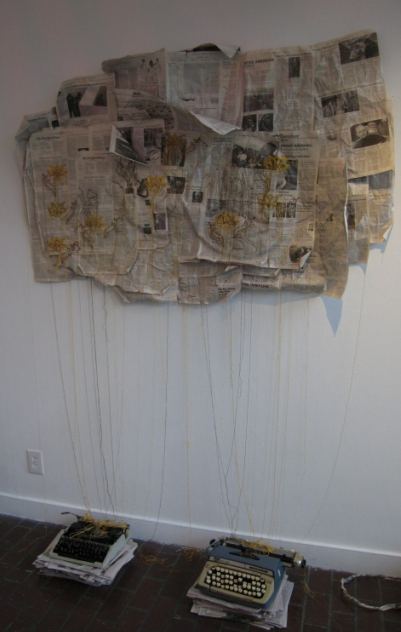
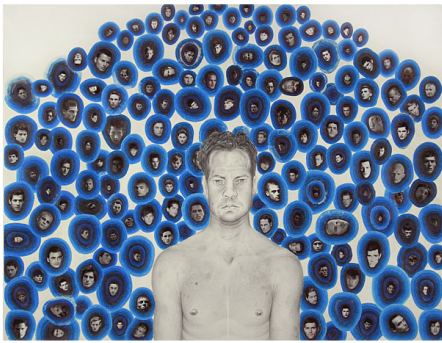
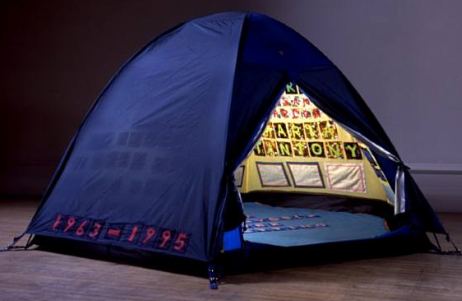
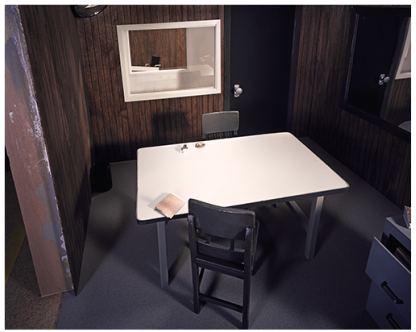 stared out his window …
stared out his window …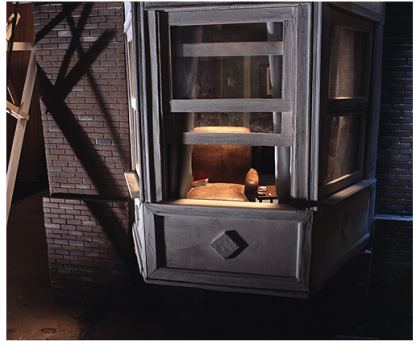 or glanced at the extra sleeping on a mattress that had been distressed by the special effects department.
or glanced at the extra sleeping on a mattress that had been distressed by the special effects department.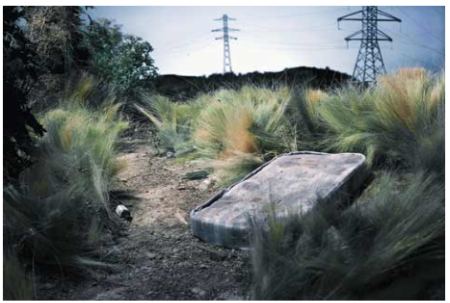 Although he tends to avoid the particular, when he engages it, he goes all the way to
Although he tends to avoid the particular, when he engages it, he goes all the way to 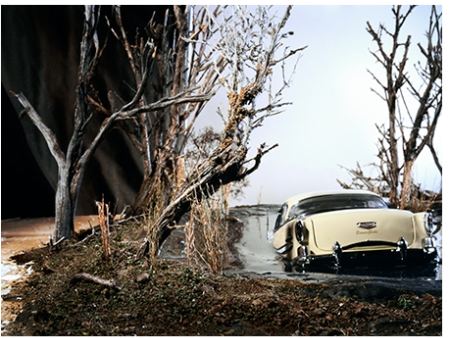 The stage sets Finger filmed and later recreated to photograph and dispose of resonate with moments of his childhood. They are memories potent enough to register outside his head and generalized enough to connect with similar memories of others. The only fox holes he dug, for instance, were in his childhood, playing war while Vietnam was ablaze on the nightly news. He was both bored and transfixed by what looked like his future. The ladder he made is missing a few rungs, giving its user a reason to continue to hide in his hole.
The stage sets Finger filmed and later recreated to photograph and dispose of resonate with moments of his childhood. They are memories potent enough to register outside his head and generalized enough to connect with similar memories of others. The only fox holes he dug, for instance, were in his childhood, playing war while Vietnam was ablaze on the nightly news. He was both bored and transfixed by what looked like his future. The ladder he made is missing a few rungs, giving its user a reason to continue to hide in his hole.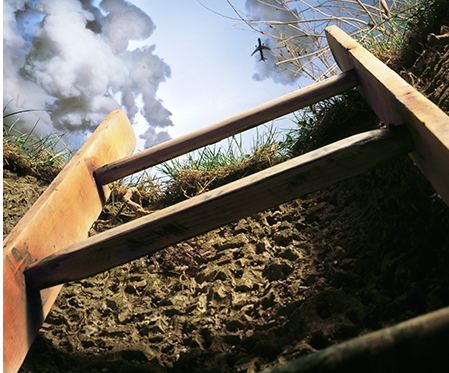 At
At  Oil: (
Oil: (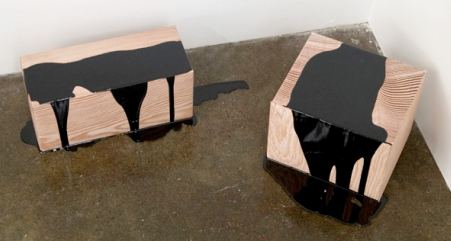
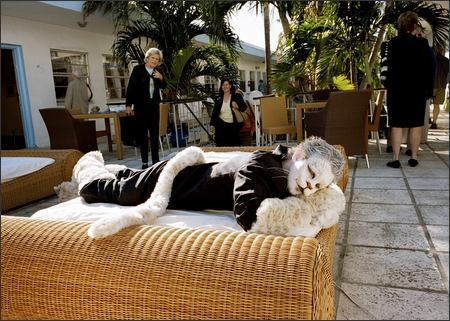 That was then. Lawrimore (who represents
That was then. Lawrimore (who represents